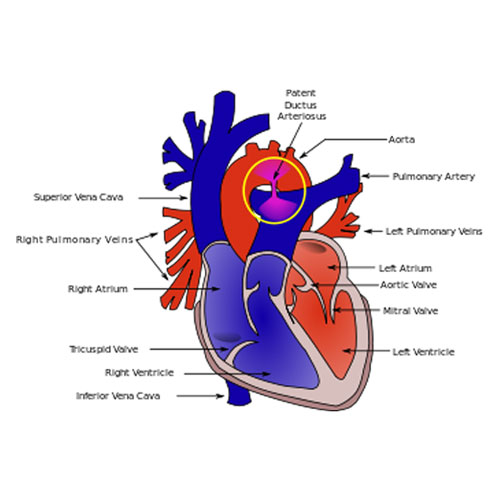WHAT IS PDA?
Patent means ‘open’. And ductus arteriosus is a normal blood vessel. So, in short, there exists an abnormal opening in a normal blood vessel. In a normal human heart, Aorta supplies oxygenated blood to the whole body & Pulmonary artery carries deoxygenated blood to the lungs. Both blood vessels are separated from each other. When a baby is in the womb, there’s a small duct that connects the aorta and the pulmonary artery, which is normal. This small duct is called as Ductus Arteriosus. It is because; lungs of a baby start working only when it is born. It keeps getting pure blood supply from the placental connection with its mother. When the baby gets birth, this ductus arteriosus gets closed within one-two days and in some conditions, up to one year. A defect gets detected when the opening doesn’t close and Aorta & pulmonary artery still has an open connection between them. Because of this, the oxygen-rich blood from aorta gets leaked into the pulmonary artery resulting in an overpressure to the lungs. The long-term prognosis for a patient undergoing PDA device closure either by surgery or device closure is outstanding.
The exact cause of PDA is unknown, yet genetics is responsible. PDA is more common in premature babies & often accompanied by Down’s syndrome and some genetic abnormalities. Usually this is a fairly straightforward surgery.
General signs & symptoms of PDA
Babies with a large PDA might have symptoms such as:
- A bounding pulse
- Fast breathing
- Not feeding well
- Shortness of breath
- Sweating while feeding
The patent ductus arteriosus is diagnosed with chest X-ray & EKG. If required, a contrast dye is also administered in a catheterization. This ductus arteriosus is either sewed or closed by a PDA Device Closure. In premature and small babies typically surgery is used to close a PDA.


